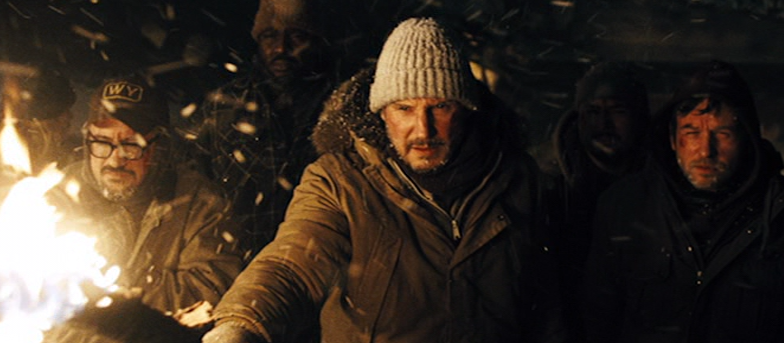
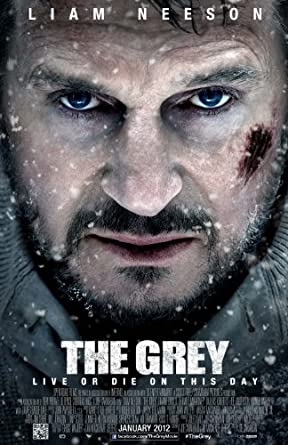
“Once more into the fray…
Into the last good fight I will ever know.
Live and die on this day…
Live and die on this day…”
The Grey basically maximizes the potential of its limited scope and streamlined narrative. It treats death with a dignity seldom found in Hollywood, approaches philosophical inquiry amidst its nonstop action, and turns an admittedly simple premise into something that exceeds expectations by subverting them. What could have easily been a run-of-the-mill man vs. nature actioner is instead a brutal, gutsy meditation on life and death and our place within the animal kingdom.1 Through careful screenwriting, competent directing, and good acting, The Grey finds itself in unique territory—it’s a film that is simultaneously heinously gory and also truly thought-provoking, more akin to something like The Revenant than to standard Liam Neeson vehicles like Taken and Unknown. The portion of the cinematic Venn diagram where bone and blood and guts overlap with earnest contemplation and self-analysis is not large, and it is refreshing to see a director take a typically discounted style—horror, with all its jump scares and predictable deaths—and marry it with challenging ideas.
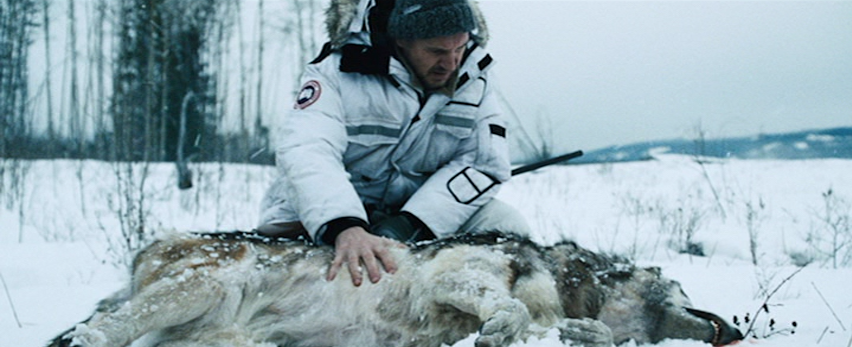
To be clear, I’m not here to claim The Grey as a modern classic. I think I’m more impressed with it relative to my expectations than I am with it in a vacuum. It is a competently made film, but one that simply isn’t trying to give you more than a couple compelling hours, a few lingering memories of savage wolves, and a harrowing image of Liam Neeson with a rifle barrel shoved into the roof of his mouth. It’s like in subjectively scored solo sports (think skateboarding or skiing) where the competitors submit their tricklists prior to their runs; the more difficult the proposed run, the higher potential score. Like many other very good movies, The Grey isn’t attempting to set any records and it is better for it. Many hubristic directors bite off more than they can chew and end up with films that fail miserably because they’re trying to be so much. This is not the case with The Grey.
Liam Neeson has starred in so many action films of this type that it feels quite natural to expect that he is playing a version of himself instead of sharpshooter John Ottway. But Neeson has legitimate acting chops (see Schindler’s List or Silence if you want proof), and he actually gets to use them here. While Ottway fits into the general Liam Neeson action hero mold, he also has prominent, non-superficial character flaws that affect him throughout the story. So, while he tries to lead the group of stranded oil drillers, stuck in the Alaskan wilderness after their plane crashes, he is also afflicted by memories of a lost loved one which drives him to alcohol and self-hatred.2
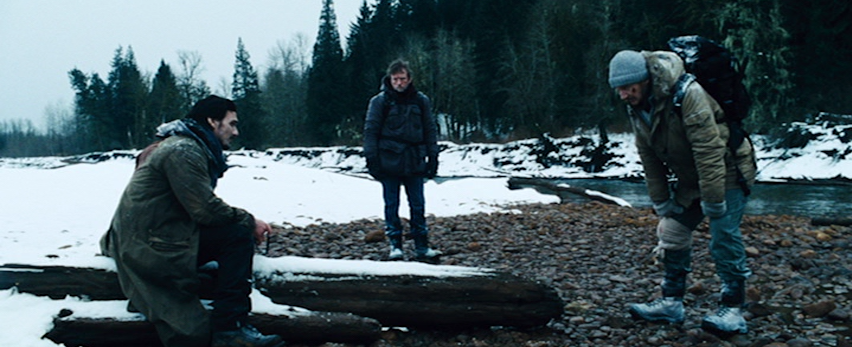
Nearly the entire plot can be surmised by watching even the most spoiler-free trailer of the movie—a plane goes down and the stranded men find themselves regularly fending off savage timber wolves as they hike toward civilization. We know that Liam Neeson will be there in the last frame, but the fate of the others remains an open question. When we are first introduced to Flannery (Joe Anderson), his motormouth conversation style lodges him firmly in the viewer’s mind. We assume he’s one of the main characters, so we are caught off guard when he lags behind the group while trekking through knee-deep snow and is ravaged by a pack of snarling wolves, his blood-streaked face flashing onto the screen with startling immediacy.
This intentionally jarring death sequence becomes par for the course. The characters are given a lot of dialogue—some of it rich, some of it pretentious—which gives their camaraderie and brotherhood a sense authenticity. If we want to accept the intended parallel, these cornered men form their own kind of wild pack, with Ottway as the clear alpha male, quickly crushing dissent with competence and ruthlessness. In one scene, he takes down a mutinous knife-fighter with his bare hands, ingenuity, and quick thinking.
The most interesting aspect of the film is the different approaches to dealing with psychological isolation and depression. Before the plane even takes off, the tone is set by a bleak opening montage. With Neeson narrating, we see him take the life of a wolf, feeling its last heartbeats with his bare hand. He describes the company of drunkards and lowlifes that he is paid to protect with his rifle. His mind is focused on a nameless woman, laying beside him as they gently caress one another. He leans his head back and downs a shot. He writes a suicide note, ending it with a poem his father wrote, then heads out into the frigid night to take his own life, only shaken from his purpose when he hears wolves howling at the moon. I don’t know what it all means—it might be profound, or it might be pseudo-profound drivel—but it’s definitely stirring, and I’m all for opening films with heavy stuff like that.
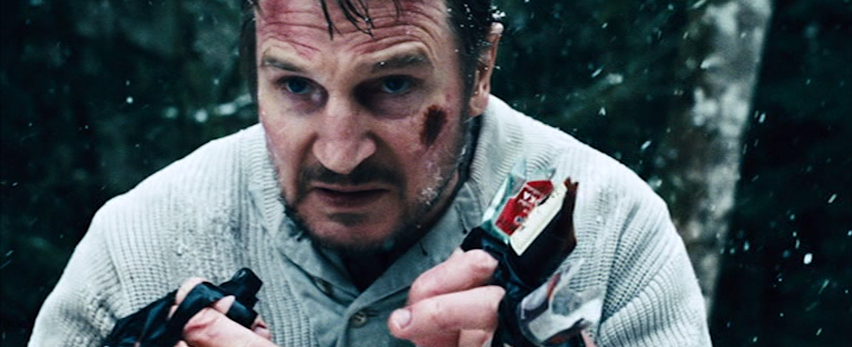
Once the plane crash happens, the men travel together, but they each struggle to keep a grasp on their sanity. We see clashing worldviews, as the devoutly religious, the devoutly irreligious, and those in between engage in mental battles when they’re not fending off wolf attacks. And the film emphatically does not shy away from showing us exactly why these men are having trouble coping. This is not The Edge; it doesn’t utilize conventional Hollywood clichés like having our protagonists fortuitously find guns and ammo, or see a helicopter fly overhead. Nope. In the first few moments after the plane crashes, we witness Ottway spend a torturous several minutes calming a man whose wounds are fatal; a man who does not want to die, but finds the courage to do so by thinking of his daughter that he will never see again. Later, with so many of his men dead from wolves and the cold, Ottway sits on his knees, gazing heavenward. He hurls quite a few choice words toward the sky as he cries out to a God he doesn’t believe in. “Show me something real! I need it now. Not later. Now! Show me and I’ll believe in you until the day I die. I swear. I’m calling on you. I’m calling on you!”
The Grey is not for the faint of heart. It’s a bleak film without a happy ending. As is typical in our household, we paused the film about halfway through (right after the death of Flannery) to make popcorn. Before we made it back to the television room, my wife requested we watch something else instead of the second half of the film. Roger Ebert was so affected by it that he walked out of the screening of the film he tried to watch after it. “The way I was feeling in my gut, it just wouldn’t have been fair to the next film.” It’s a brutal film that is uncompromising in its execution, one that is worth watching if you have the stomach for it.
1. Viewing a trailer of the film will lead you to believe that you are in for two hours of Liam Neeson beating wolves to death with his bare hands. That’s not the case.
2. Many have pointed out Liam Neeson’s wife, Natasha Richardson, died in an accident only a year or so prior to filming The Grey, which adds some real emotional weight to his performance.
Sources:
Figueroa, Dariel. “The One Movie That Affected Roger Ebert So Much He Couldn’t Sit Through His Next Screening”. Uproxx. 7 May 2015.